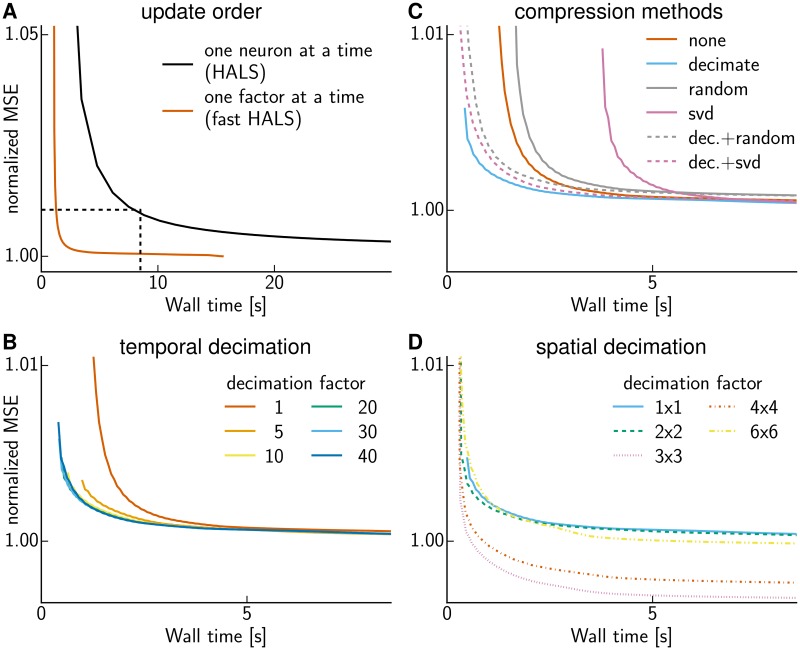Fig 1. Speeding up CNMF.
Mean-squared-error as a function of wall time. (A) The order in which coordinates in the block-coordinate descent method are updated affects convergence speed. The dashed box indicates the zoomed in plot region of (B, C, D) (B) Temporal decimation speeds up CNMF. Curves show the normalized mean square error (MSE; normalized so that at convergence the original CNMF method reaches a value of 1) on the whole data after 30 initial iterations are performed on a smaller dataset obtained by temporally decimating by different factors k—i.e., averaging each block of k frames into a single frame (color indicates k, cf. legend). The curve for decimation factor 1 (i.e., no decimation) is identical to the one in (A). (C) Temporal decimation outperforms other compression schemes. Compressing further after decimation (dashed lines) is not beneficial. The cyan and vermilion curve are the same as in (A,B). (D) Spatial decimation (locally averaging over spatial blocks of size l × l in the image) yields further improvements, in particular a better (local) minimum of the MSE. Curves show the results for 30 initial iterations on data that has been decimated temporally by a factor of 30 and spatially by the factors l given in the legend. The solid cyan curve for spatial decimation factor 1×1 (i.e., no spatial decimation) is the same as in (B, C).

